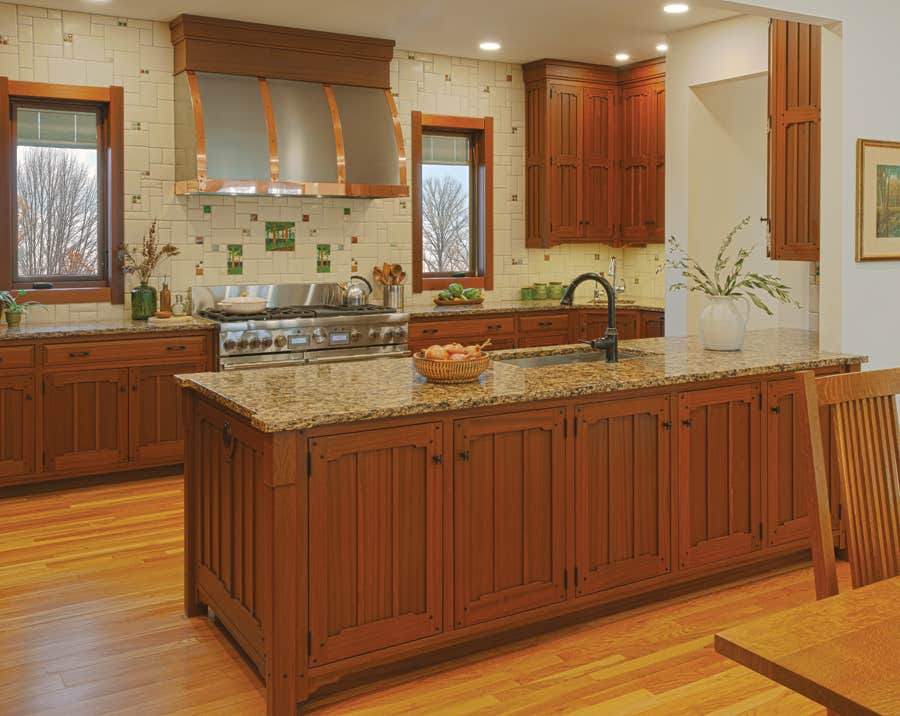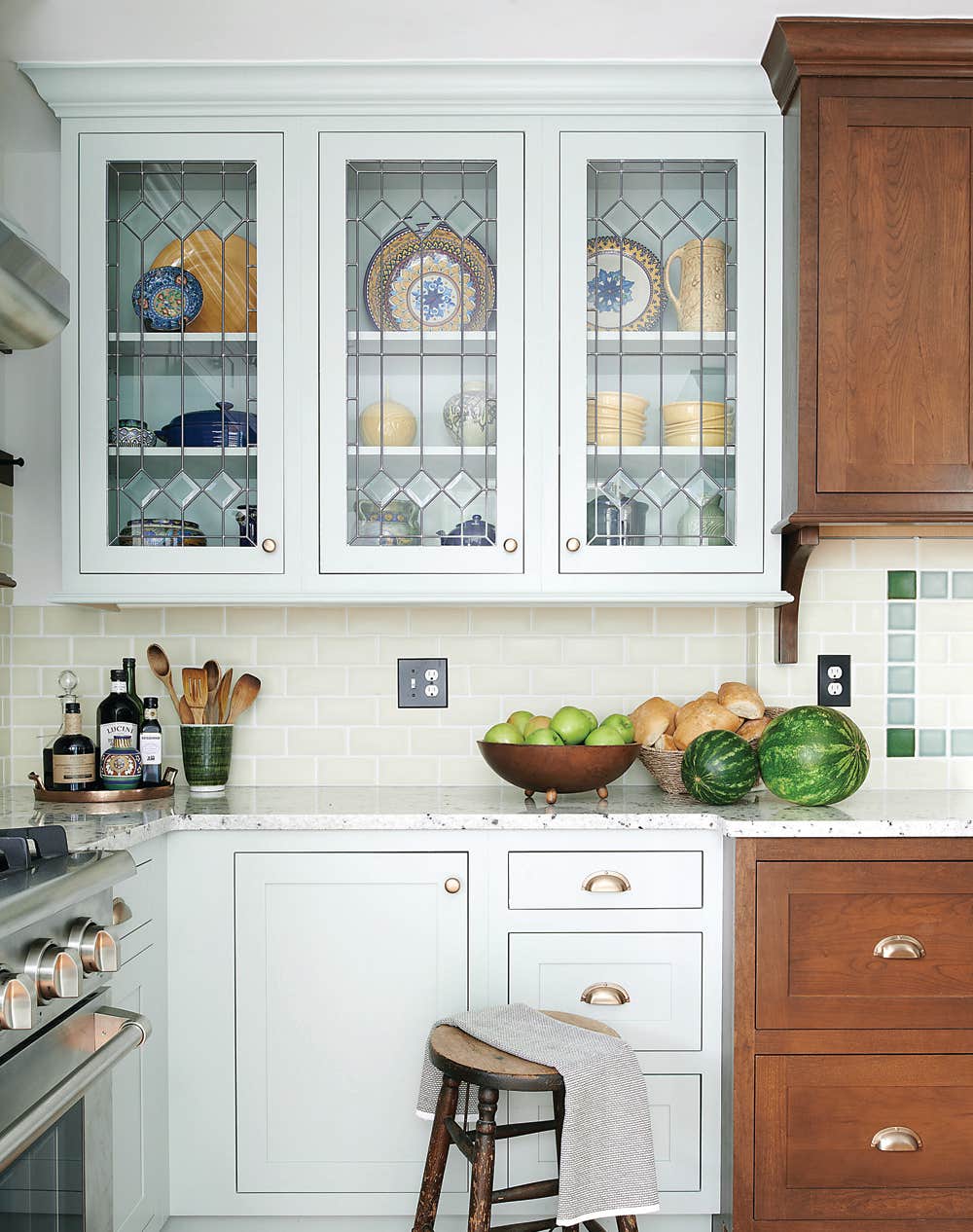A Simple Vintage Kitchen Restoration
For years, Rosalie Wampler and Michael Gill had tried to make the best of the badly remuddled vintage kitchen in their 1909 bungalow. Time for a change.
Dark-brown particleboard cabinets and a chipped, impossible-to-clean sink dated to the late 1970s. The printed asbestos-tile floor was also damaged. “It never looked clean,” Rosalie says.
All along, the kitchen had one saving grace: a wall of original built-in cabinets. They sagged so much the doors wouldn’t stay shut, but they exuded period charm nonetheless.
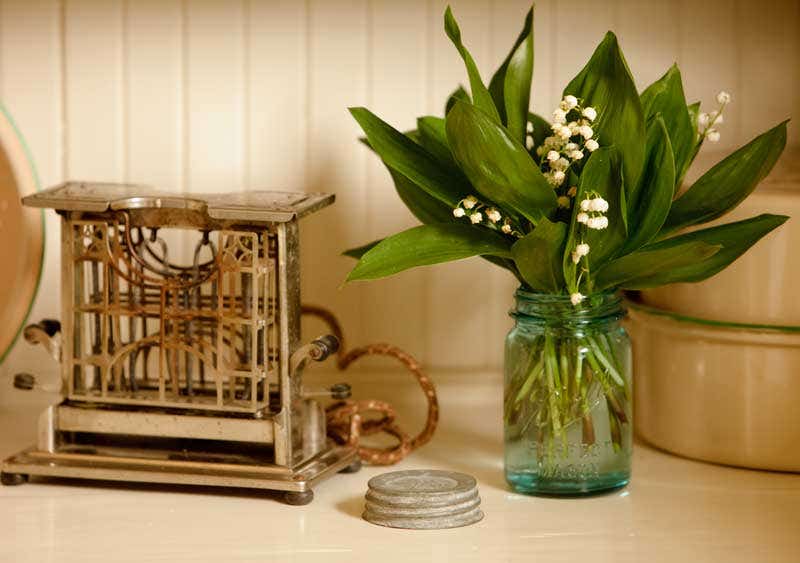
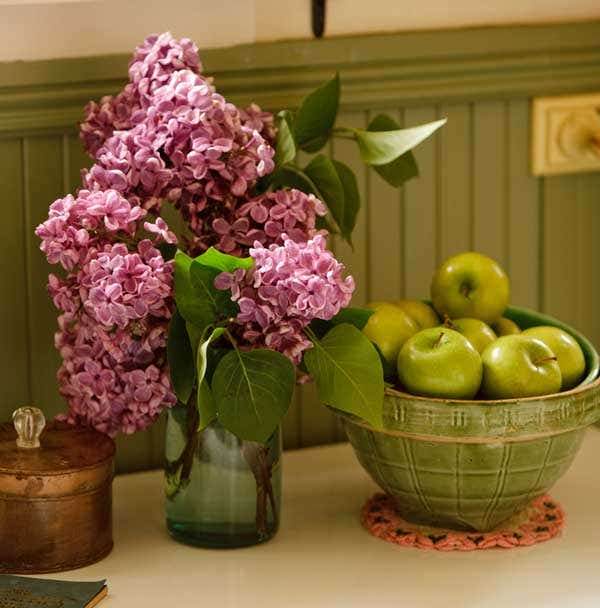
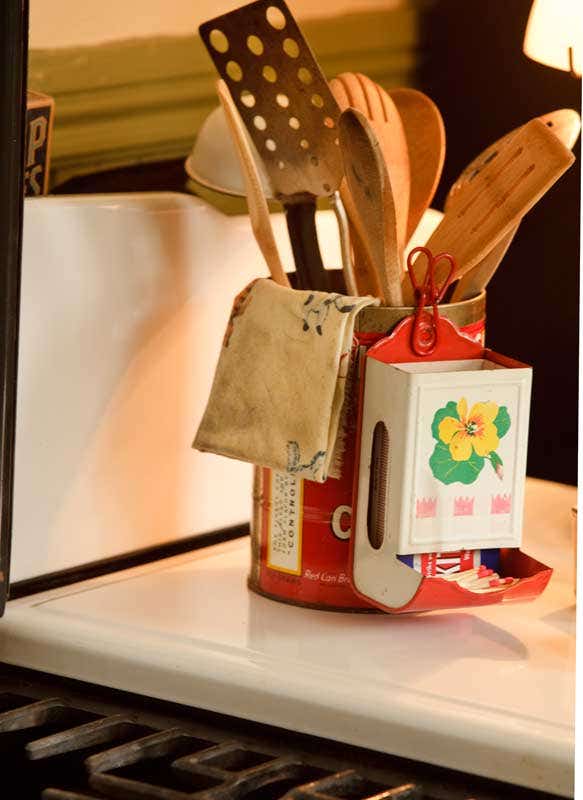
“I’d redone the roof, attic, and basement, but I couldn’t figure out what to do with the kitchen,” Michael admits. “So we just did something to make us laugh.” Taking the late ’70s as a cue for the kitchen restoration, the couple painted the kitchen electric pink and turquoise, and then hung posters of Farrah Fawcett and Lionel Ritchie.
Finally the time came to sell the house, which is in Portland, Oregon, so the couple could make a planned move to Montana. The mod kitchen had to go, but Rosalie saw no reason to do a contemporary remodeling. The rest of the bungalow retains its period look, so she decided the kitchen should get a simple treatment.
“We didn’t have to hire anyone,” says Rosalie, who has managed apartments for years. “We did it all ourselves.” Michael was responsible for “demolition”—removal of the particleboard cabinets and laminate countertops. “It took all of two and a half minutes,” he says.
“Secretly, I’d been hoping we’d find beadboard behind the plywood wainscot,” Rosalie says. They did. They also found 1930s newspaper used between the layers, and underneath, the vintage paint color. Now came Rosalie’s part: two months to put together a period kitchen, using salvaged elements and working from a ca. 1910 photograph. Her father and brother provided construction guidance.
The kitchen was featured in Portland’s Architectural Heritage Kitchen Revival Tour in 2011—and the house sold in just 10 days. Before the sale, Rosalie had argued with her appraiser and stager, both of whom were looking for more modern conveniences. Now she and Michael feel validated. “My argument always was that one person will buy the house, not the masses,” says Rosalie, “and that person will be attracted to its architectural integrity.”
Donna Pizzi is a writer and producer for film and print, and co-owner of Blackstone Edge Studios with her husband, photographer Philip Clayton–Thompson. Over three decades, Pizzi has scouted out and written countless articles about home restoration for Arts & Crafts Homes and Old House Journal.




